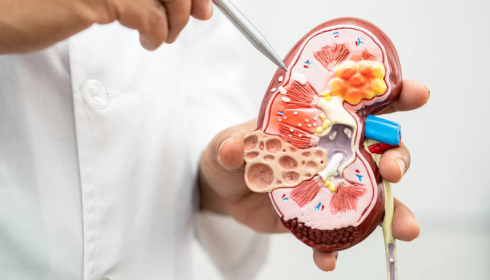Kidney stones are a common yet painful medical condition that affects millions of people worldwide. These small, hard deposits form inside the kidneys when minerals and salts crystallize. Passing a kidney stone can be extremely painful, and timely kidney stone treatment is crucial to prevent complications. Fortunately, with advancements in medical science, there are multiple ways to manage and treat this condition effectively.
Understanding Kidney Stones
Kidney stones vary in size, ranging from tiny grains to larger stones that may block the urinary tract. They are composed of different substances such as calcium oxalate, uric acid, struvite, or cystine. Factors like dehydration, high-salt diets, obesity, and genetic predisposition increase the risk of stone formation. Symptoms usually include severe back or abdominal pain, blood in the urine, nausea, vomiting, and frequent urination.
Types of Kidney Stone Treatment
1. Increased Hydration and Lifestyle Changes
For smaller stones, doctors often recommend drinking plenty of water—at least 2–3 liters daily. This helps flush out the urinary system and may allow small stones to pass naturally. Along with hydration, dietary modifications play a big role. Reducing salt intake, limiting foods high in oxalate (like spinach, beets, and nuts), and eating a balanced diet help reduce the recurrence of stones.
2. Medications
In some cases, medications are prescribed to manage pain and help stones pass more quickly. Alpha-blockers, for example, relax the muscles in the ureter, making it easier for stones to pass. Additionally, doctors may prescribe drugs to control the underlying causes—such as uric acid-lowering medicines or diuretics to reduce calcium levels.
3. Extracorporeal Shock Wave Lithotripsy (ESWL)
ESWL is one of the most commonly used non-invasive techniques for treating kidney stones. High-energy sound waves are targeted at the stone, breaking it into smaller fragments that can be passed naturally through urine. This outpatient procedure is effective for stones that are moderately sized and located in areas accessible to shock waves.
4. Ureteroscopy
When stones are lodged in the ureter or are too large for natural passage, ureteroscopy is an effective option. A thin scope is passed through the urinary tract to locate and remove or break up the stone using a laser. This method is minimally invasive and typically requires only a short recovery period.
5. Percutaneous Nephrolithotomy (PCNL)
For very large stones or those resistant to other treatments, PCNL may be necessary. In this procedure, a small incision is made in the back to allow direct access to the kidney. The stone is then removed or broken apart using specialized instruments. While more invasive, PCNL is highly effective for complex cases.
Preventing Kidney Stones
Treatment is essential, but prevention ensures long-term relief. Preventive steps include:
- Drinking adequate water daily to keep urine diluted.
- Following a balanced diet low in sodium and animal protein.
- Including more citrus fruits, which increase citrate levels that prevent stone formation.
- Regular medical checkups, especially if you have a family history of kidney stones.
When to See a Doctor
Not all kidney stones require surgery, but persistent pain, fever, or blood in the urine are signs you should seek immediate medical attention. Early diagnosis helps determine the right approach for treatment and avoids complications like urinary tract infections or kidney damage.
Conclusion
Kidney stones may be a painful and recurring problem, but with proper medical care and lifestyle modifications, they can be effectively managed. From hydration and medications to advanced surgical methods like ESWL and PCNL, there are multiple options for safe and reliable stone removal. Choosing the right kidney stone treatment not only provides relief but also ensures a healthier, stone-free future.

